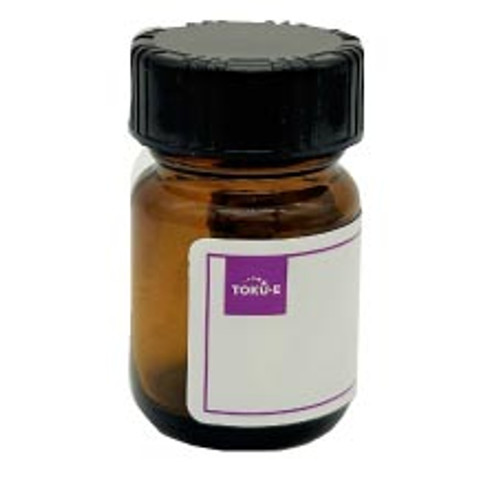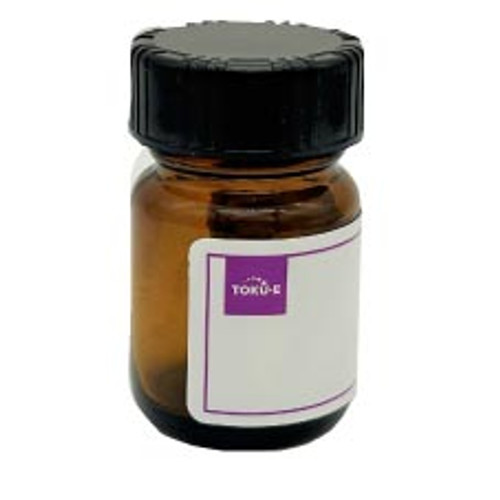G418 Disulfate (syn: Geneticin) is an aminoglycoside antibiotic isolated from Micromonospora rhodorangea and is similar in structure to Gentamicin B1. G418 is an analog of Neomycin Sulfate and has a similar mechanism to Neomycin. It has a broad range of in vitro and in vivo antibacterial activity. It is routinely used for gene selection in cell culture, for selection and maintenance of both prokaryotic and eukaryotic cells transfected with the neomycin resistance gene (neo).
G418 Disulfate is soluble in water.
| Mechanism of Action | G418 Disulfate and other aminoglycosides prevent protein synthesis at the early stages of elongation, post-initiation, initiation of translation. Resistance to G418 Disulfate is conferred by the Neomycin resistance gene (neo) from either Tn5 or Tn601 (903) transposons. Cells transfected with resistance plasmids containing the neo gene can express aminoglycoside 3'-phosphotransferase (APT 3' I or APT 3' II) which covalently modifies G418 to 3-phosphoric G418, which has negligible potency and has low-affinity for prokaryotic and eukaryotic ribosomes. |
| Spectrum | G418 Disulfate is toxic to susceptible bacteria, fungi, yeast, protozoa, helminths, mammalian cells, and plants. |
| Microbiology Applications | G418 Disulfate is used as a gene selection agent after transfection of eukaryotic cells. |
| Eukaryotic Cell Culture Applications |
G418 Disulfate is routinely used as a selection agent in cell culture after transfection of eukaryotic cells. Resistant cells express the neo gene which produces aminoglycoside 3'-phosphotransferase (APT 3' I or APT 3' II), a protein that confers resistance to G418 Disulfate and other aminoglycoside antibiotics. Optimal working concentrations:
The optimal working concentration of G418 Disulfate to select for resistant clones depends on the cell line, reagent quality, reagent lot, media, growth conditions, cell density, cell metabolic rate, cell cycle phase, and plasmid quality. A kill curve should be performed to determine the optimal concentration for each experimental system. Use the following guide to determine the appropriate concentration:
A working concentration of 200 mg/L is usually sufficient after resistant mammalian clones are selected and can be used for maintenance until stable resistant clones are selected. Genetically engineered embryonic stem cells were transfected with a fusion gene containing the alpha-cardiac myosin heavy chain (MHC) promoter driving the aminoglycoside phosphotransferase (neo gene). Selection protocols used G418 +/-retinoic acid. Enrichment of cardiomyocytes could be achieved in cultures treated with G418 alone or with retinoic acid (Zandstra et al, 2003). Human induced pluripotent stem cells (hiPSCs) can be used to study skeletal muscle differentiation in vitro and the expression of transcription factors, with focus on MYOD1. One of the tools, piggyBac transposon vector, is transduced into hPSCs and cells are selected with G418 or Puromycin and screened for the appropriate MYOD1-hPSC clones showing highly efficient skeletal muscle differentiation. Multiple MYOD1-hPSC clones should be analyzed. The selection marker plays an important role in increasing transgene expression efficiency. Authors found Puromycin selection resulted in high-level transgene expression and efficient skeletal muscle differentiation even in bulk culture of MYOD1-hiPSCs. This bulk differentiation system may help generate disease models for analyzing pathophysiological mechanisms of muscular disorders (Rashid et al, 2023). The Selectivity Factor is a quantifiable measure of how efficient an antibiotic is during the process of gene selection. Our R&D team tested the selectivity factor of G418 Disulfate for BHK-21 and HeLa cell lines. They found that G418 is an ideal selection antibiotic for transfected BHK-21 cells but not optimal for HeLa cells. The method uses a modified MTT assay, which can be used to numerically determine the antibiotic efficiency (Delrue et al, 2018). For more information about the Selectivity Factor, click here. For more information on relevant cell lines, culture medium, and working concentrations, please visit the Cell-Culture Database. |
| Molecular Formula | C20H40N4O10 · 2H2SO4 |
| Biological Assay | ED50 Resistant: ≥2500 µg/mL ED50 Sensitive: ≤400 µg/mL |
| Elemental Analysis |
Carbon: 28.80-36.07% Ammonia: ≤1.0% |
| Documents | G418_Disulfate_Kill_Curve_Protocol.pdf|Plasmid_DNA_Transfection_Protocol.pdf|Selection_of_Stable_Transfected_Cell_Lines_Protocol.pdf |
| References |
Aragão FJL and Brasileiro ACM (2002) Positive, negative and marker-free strategies for transgenic plant selection. Braz. J. Plant Physiol. 14(1):1-10 Davis BD (1987) Mechanism of bactericidal action of aminoglycosides. Microbiol. Rev. 51(3):341-350 PMID 3312985 Lin-Cereghino, J et al (2008) Direct selection of Pichia pastoris expression strains using new G418 resistance vectors. Yeast 25:293-299 PMID 18327886 Rashid M et al (2023) Simple and efficient differentiation of human iPSCs into contractible skeletal muscles for muscular disease modeling. Sci. Rep. 13:8146 Shin Y (2007) Selection of NptII transgenic sweet potato plants using G418 and paromomycin. J. Plant Biol. 50(2):206-212 Zandstra PW et al (2003) Scalable production of embryonic stem cell-derived cardiomyocytes. Tissue Eng. 9(4):767-778 PMID 13678453 |
| Protocols | G418 Disulfate Kill Curve Protocol Background: G418 Disulfate (Syn: Geneticin; G418 Sulfate) is routinely used to select for successfully transfected mammalian cells that express the neo antibiotic resistance gene in addition to the gene of interest. The neo gene encodes amino-glycoside 3’-phosphotransferase; an enzyme which confers resistance to G418 disulfate and neomycin. Before stable transfected cell lines can be selected, the optimal G418 disulfate concentration needs to be determined by performing a kill curve titration. The optimal concentration of G418 Disulfate suitable for selection of resistant mammalian clones is dependent on the cell lines, media, growth conditions, and the quality of G418 Disulfate. Due to minor batch-to-batch variability, it is necessary to perform a kill curve for every new cell type and new batch of G418 Dsulfate. Preparation and storage of G418 Disulfate solution:
Kill curve/G418 Titration Protocol:
Plasmid DNA Transfection Protocol Background: Once the appropriate antibiotic concentration to use for selection of the stable transfected cells has been determined by performing a kill curve, the next step is to generate a stable cell line by transfection of the parental cell line with a plasmid containing the gene of interest and an antibiotic resistance gene. Plasmid DNA Transfection Protocol:
Quality Control:
Seed 24-wells with insert and determine the transfection efficiency by immunostaining:
Selection of Stable Transfected Cell Lines Background: Once the cells have been successfully transfected, the next step is to seed and select the transfected cell line in a single 96-well plate to select pure colonies by limited dilution as outlined below. Protocol:
Quality Control: Seed 24-wells with insert for an immunostaining to determine percentage of cells expressing the gene of interest to be able to identify a 100% pure clone. You can also use Western blotting, flow cytometry or another technique depending on the cell line used. Seed 24-wells with insert and determine the expression level of the gene of interest by immunostaining:
|
| MIC | Enterobacter| 1 - >64|| Escherichia coli (animal health isolate)| 1 - >64|| Klebsiella| 1 - 32|| |






